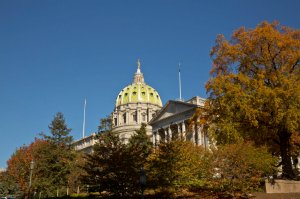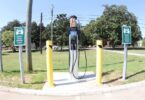By Angela Couloumbis & Charlotte Keith| Spotlight PA

With the true financial fallout from the coronavirus still unknown, and the prospects for recovery uncertain, the Pennsylvania legislature is on track this week to approve a temporary, five-month spending plan that does not raise taxes and keeps funding level for all state departments.
The move comes as a new independent analysis predicts the state will lose nearly $5 billion in revenue through June of next year, setting the stage for a larger fight in the fall over how to finish the budget.
Republicans who control both chambers said approving a temporary budget will allow officials to get a clearer picture of the strain placed on Pennsylvania’s finances by the state’s efforts to slow the spread of COVID-19.
Democrats in both chambers, as well as Democratic Gov. Tom Wolf, have signaled that they agree with the unorthodox plan to pass the budget in waves, which will allow the state to meet a July 1 deadline for passing a spending plan while buying some time to figure out how deeply revenues will be impacted.
“All of us are struggling to know exactly what the financial situation is going to look like over the course of the whole next fiscal year,” Wolf said Tuesday, during the administration’s daily briefing. “So we are going to do some unusual things.”
Jennifer Kocher, spokesperson for Senate Republicans, said, “We think it’s the responsible thing to do.”
Under the proposal, lawmakers would freeze funding for the next five months at current levels for all state programs.
The one exception to the five-month plan: education. Dollars for early childhood and special education, as well as for public schools and higher education, would be flat-funded through the end of the next fiscal year.
That would guarantee, at least, that schools — which over the last six years under Wolf have seen funding boosts every year — will not see cuts in state funding.
“The goal is to get a five-month budget plan across the finish line hopefully this week,” said Mike Straub, a spokesperson for the House Republican majority, cautioning that “a lot of hurdles” still remain.
Some legislative Democrats on Tuesday stressed that before signing off on the spending plan, which is expected to move with uncharacteristic speed through the chambers by the end of the week, they want more time to examine it in detail.
The decision to move a temporary spending plan comes as the state’s Independent Fiscal Office is predicting $4.8 billion in permanent revenue loss through June 2021 due to the coronavirus.
“We do think there is a permanent, long-term hit to the economy,” said Matthew Knittel, director of the fiscal office. “We don’t know the shape or pace of the recovery and there’s no historical precedent.”
General fund revenues for the current year will be 10% lower than estimated, the fiscal office predicts. Around half of that shortfall is due to the delay of the deadline for filing personal income taxes, and will be made up later in the summer.
Before the pandemic hit, Pennsylvania’s economy was growing steadily, with tax revenues coming in slightly higher than estimated and unemployment at historic lows. But the business shutdown put in place to slow the spread of the virus imposed an “instant recession,” Knittel said.
The massive federal stimulus package is providing a temporary economic boost, he said, with newly generous unemployment benefits largely offsetting the impact of lost wages and buoying consumer spending — at least, until the $600 addition expires in July. Because of a statewide moratorium on foreclosures and evictions, it’s also unclear how many people have fallen behind on mortgage and rent payments.
Officials are anxiously waiting to see if President Donald Trump and Congress will agree on another injection of stimulus dollars to help states balance their books. Pennsylvania is sitting on nearly $4 billion in discretionary federal funding for COVID-19 response, although the U.S. Treasury says those dollars can’t be used to make up revenue shortfalls.
Businesses across Pennsylvania are gradually reopening as more counties move into the “yellow” and “green” phases of Wolf’s tiered plan, although social-distancing precautions will remain in place. Even in the green phase, some businesses including bars and restaurants will only be allowed to operate at 50% capacity.
The fiscal office’s numbers assume that there is no second wave of COVID-19 cases later in the year that would prompt another round of business shutdowns. The World Health Organization warned Monday that countries may see an “immediate second peak” of cases should they reopen too quickly.
Spotlight PA is an independent, nonpartisan newsroom powered by The Philadelphia Inquirer in partnership with the Pittsburgh Post-Gazette and PennLive/Patriot-News. Sign up for our free weekly newsletter.
100% ESSENTIAL: Spotlight PA relies on funding from foundations and readers like you who are committed to accountability journalism that gets results. If you value this reporting, please give a gift today at spotlightpa.org/donate.








